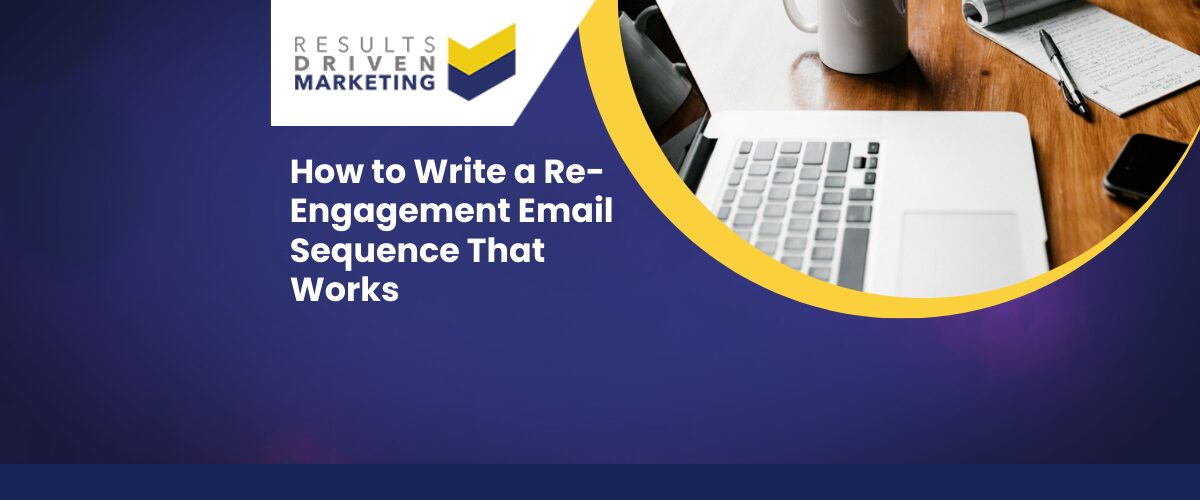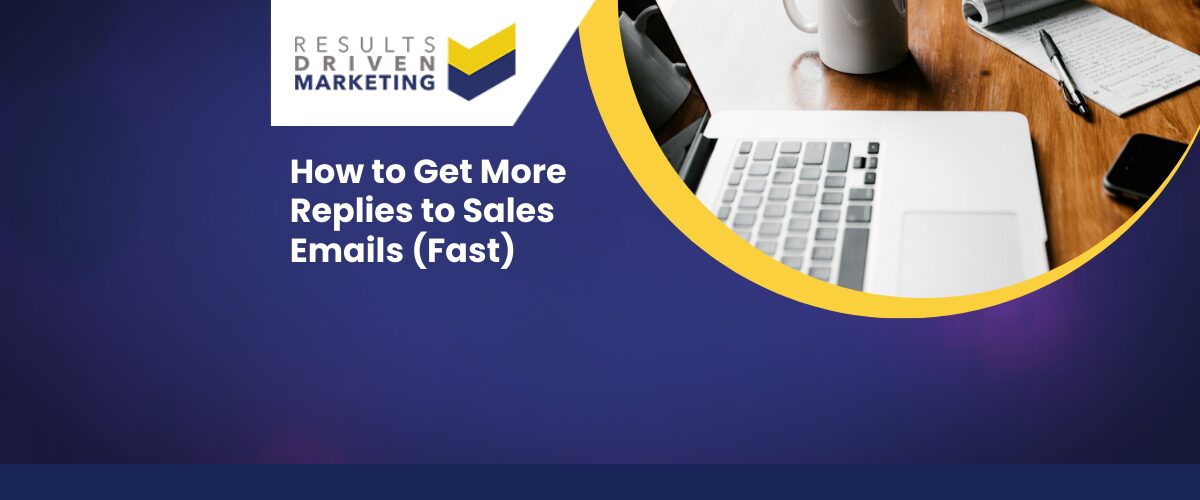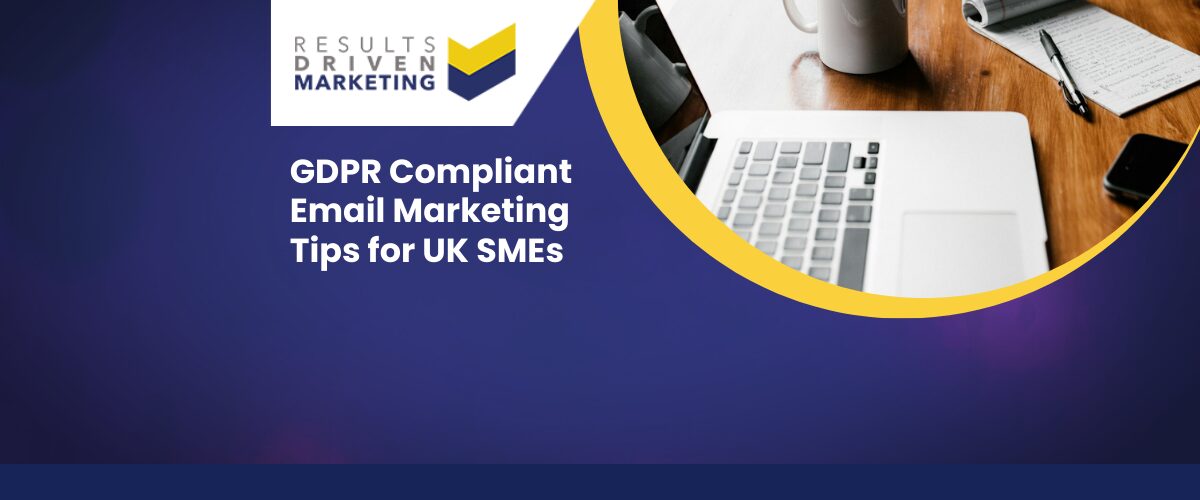
How to Write a Re-Engagement Email Sequence That Works
Knowing how to write a re-engagement email sequence is essential for any SME that wants to win back lost leads or revive inactive subscribers. Every business invests time and budget into building an email list, but when contacts go silent, it can feel like all that effort has gone to waste. Declining open rates, fewer clicks, and a shrinking pool of engaged prospects directly impact sales and ROI.
The truth is, inactive contacts don’t always mean “dead leads.” In many cases, they simply need the right nudge to re-engage. A well-planned email sequence can remind them why they were interested in your business in the first place, rebuild trust, and even turn them into paying customers.
In this guide, we’ll break down exactly how SMEs can create an effective re-engagement sequence — from the structure and messaging to personalisation tips and common mistakes to avoid.
Table of contents:
Why Re-Engagement Campaigns Matter
It’s easy to think of inactive contacts as “lost causes,” but in reality, re-engagement campaigns often deliver some of the best returns. For SMEs with limited budgets, ignoring inactive subscribers means leaving potential revenue on the table.
The Cost of Ignoring Inactive Contacts
Building a fresh list of prospects takes time and money. Reactivating people who already know your brand is far more cost-effective than starting from scratch. Even if only a small percentage re-engage, the return can be significant.
More Cost-Effective Than Always Finding New Leads
Think of your database like a garden. It’s far easier to revive plants that need watering than to constantly plant new seeds. The same applies to your email list — nurturing existing contacts often brings faster results than chasing new ones.
Building Trust and Long-Term Relationships
A well-structured re-engagement sequence shows you care about your audience, not just the sale. By reminding them of your value and offering useful content or incentives, you rebuild trust. This not only recovers lost opportunities but also strengthens loyalty for the future.
Laying the Foundations for a Re-Engagement Sequence
Before you jump into writing subject lines and crafting offers, the groundwork needs to be right. Without accurate data and proper segmentation, even the best-written sequence won’t deliver the results you want.
Start with Clean, Accurate Data
Re-engagement emails only work if they reach the right inboxes. Outdated records, wrong job titles, or irrelevant contacts will drag down your results and harm deliverability. By starting with reliable B2B data, you give your campaign the best chance of success.
Segment Your Inactive Audience
Not all inactive contacts are the same, so treat them differently:
-
Never-openers: people who’ve never engaged may need a bold, attention-grabbing approach.
-
Lapsed customers: once-engaged buyers who’ve gone quiet — often the easiest to win back.
-
Semi-engaged contacts: those who open occasionally but rarely act — they may just need clearer calls-to-action.
Segmentation helps you target messages to each group, making your re-engagement efforts more personal and effective.
Step-by-Step: How to Write a Re-Engagement Email Sequence
A re-engagement sequence isn’t about sending one desperate “please come back” email — it’s a structured process designed to wake up contacts gradually. Here’s how SMEs can build a sequence that works.
Email 1 – Acknowledge and Reintroduce
Start light and friendly. Remind the contact who you are and why they signed up in the first place. Keep the tone warm, professional, and centred on value. Example: “We’ve noticed it’s been a while — here’s what you might have missed.”
Email 2 – Offer Value or Incentive
Once you’ve reintroduced yourself, give them a reason to re-engage. This could be exclusive content, a discount, or a free count tailored to their industry. The key is to make the offer relevant to their needs.
Email 3 – Highlight Benefits and Social Proof
Share what other businesses like theirs have achieved by working with you. Case studies, testimonials, and success stories work well here to rebuild trust and credibility.
Email 4 – Clear Call-to-Action
Make the next step obvious. Whether it’s downloading a resource, requesting a data count, or booking a quick call, keep the CTA simple and benefit-driven.
Email 5 – The Break-Up Email
If they still haven’t responded, send a respectful final message. Be honest: “Should we stop contacting you?” This gives them a choice — and often prompts a last-minute reply from people who don’t want to miss out.
Personalisation Tips for Re-Engagement Emails
The difference between an email that gets ignored and one that sparks action often comes down to personalisation. But this goes well beyond just adding a first name.
Go Beyond First Names
While including a name in the subject line can help, it isn’t enough. True personalisation means tailoring the content around what matters to your recipient — their role, industry, or the challenges their business is facing.
Write Subject Lines That Resonate
Generic subject lines like “We miss you” can fall flat in B2B. Instead, reference a challenge or opportunity relevant to the reader, such as “Is your sales pipeline still slowing down?” or “Boost campaign ROI with better targeting.”
Use Past Behaviour to Guide Messaging
If someone once opened your campaigns or even purchased from you, reflect that in your tone. Acknowledge their past interaction and remind them of the value they experienced.
Keep It Human and Authentic
The last thing you want is to sound like a robot. Use a friendly, conversational tone that shows there are real people behind the emails. Prospects respond to genuine, relatable messages far more than polished but impersonal ones.
Common Mistakes to Avoid in Re-Engagement Campaigns
Even the best-intentioned campaigns can fall flat if handled poorly. To maximise results, steer clear of these common mistakes.
Overloading Inboxes
Sending too many follow-ups too quickly often pushes contacts to unsubscribe. A re-engagement sequence should feel steady and professional, not desperate. Space messages out over several days or weeks.
Using Generic Copy
If every email sounds the same and could be sent to anyone, it won’t stand out. Avoid vague phrases and instead focus on the recipient’s role, industry, or challenges. Relevance is key to winning attention.
Offering the Wrong Incentives
Throwing out discounts or irrelevant offers can make you look unfocused. In B2B, value is often measured in time saved, results delivered, or compliance supported — not giveaways that don’t fit the audience.
Ignoring Compliance and Trust
Failing to respect regulations like GDPR not only risks penalties but also damages credibility. Always be transparent, give people the option to opt out, and show that you respect their preferences.
Measuring Success of a Re-Engagement Sequence
A re-engagement campaign is only as good as the results it delivers. Tracking the right metrics helps SMEs understand what’s working, what isn’t, and where to adjust.
Open and Click-Through Rates
These are your first indicators of interest. Low open rates may signal weak subject lines, while poor click-through rates often mean the content or call-to-action isn’t compelling enough.
Reactivation Rate
This is the percentage of inactive contacts who start engaging again after your sequence. Even a small uplift here can have a big impact on long-term ROI.
Conversion Rate
Ultimately, the goal is to generate sales or meaningful actions. Track how many re-engaged contacts go on to purchase, request a data count, or book a call.
Impact on ROI
Re-engagement campaigns should be seen as an investment. Compare the cost of running your sequence with the revenue generated from revived contacts. Often, the return is higher than chasing new leads.
Why Choose Results Driven Marketing
Behind every successful re-engagement sequence is accurate, reliable data. Without it, even the best-written emails won’t hit the mark. At Results Driven Marketing, we provide SMEs with the tools and support they need to reconnect with prospects and turn dormant contacts into customers.
Here’s why businesses across the UK choose us:
-
Accurate, industry-standard data – Aggregated from top UK sources and checked against strict quality benchmarks.
-
Segmentation across 2,000+ sectors – Whether you need to target decision-makers in manufacturing, finance, recruitment, or beyond, we’ll help you reach the right people.
-
Fast, secure delivery – Your data is provided in a password-protected format within 24 hours, so you can launch re-engagement campaigns quickly.
-
Support from real people – Our team offers practical guidance to make sure your campaigns succeed, not just a list of names.
-
Focused on your results – We help SMEs turn accurate email lists into more customers, stronger pipelines, and measurable ROI.
With Results Driven Marketing, you don’t just get data — you get a partner who cares about your long-term success.
Conclusion — Rebuild Relationships and Boost Sales
Knowing how to write a re-engagement email sequence gives SMEs the power to win back lost opportunities, strengthen relationships, and drive new sales without constantly chasing fresh leads. Inactive contacts don’t always mean “lost forever” — often, they just need the right reminder of the value you offer.
To recap:
-
Reliable, accurate data is the foundation of any successful re-engagement campaign
-
Segmentation ensures each message feels relevant to the recipient
-
A structured sequence, from gentle reminders to clear calls-to-action, makes it easier to revive interest
-
Tracking results helps refine your approach and prove ROI
With the right data and the right strategy, re-engagement emails can turn cold prospects into loyal customers.
At Results Driven Marketing, we make that possible by providing accurate, targeted B2B data and expert guidance. Ready to re-engage your audience and grow your sales? Contact us today and let’s get started.
About Results Driven Marketing
Results Driven Marketing is a UK-based provider of B2B marketing lists, specialising in email, telemarketing, and direct mail data. We support SMEs across every sector with accurate, GDPR-compliant data solutions to power effective outreach and re-engagement campaigns.
📍 Based in Newcastle (Cobalt Business Exchange)
📞 0191 406 6399
🌐 rdmarketing.co.uk





